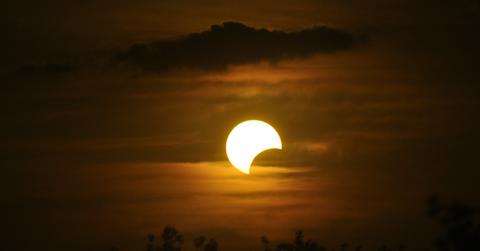How America's Utility Companies Successfully Prepared for Solar Eclipse
States that rely heavily on solar generation didn't see any problems with the electric grid when the eclipse hit on Monday. Enough preparation in pulling from other sources kept things running smoothly in California and North Carolina.
Updated May 24 2019, 7:48 p.m. ET
The solar eclipse came and went on Monday, and much of the focus stayed on the shock and awe people experienced when viewing it. Despite various warnings of how the sun’s blockage could significantly impact solar generation and cause the electrical grid to freak out, there wasn’t any major issues across the board.
More reliant states like California and North Carolina saw a huge dip in solar capacity, but utility companies prepared well in advance to use alternative sources during the blackout period. The California Independent System Operator (CAISO), which runs 80 percent of the grid, prepared for a loss of 4,300 megawatts. Based on initial estimates, 79 percent of that production actually fell by the time the eclipse came to a conclusion.
"We didn’t have any major challenges on the system, even minor challenges,” said Eric Schmitt, CAISO’s Vice President of Operations, in the San Diego Union-Tribune. “We are very pleased about how smoothly it went … All the resources performed the way they were supposed to perform, our planning was excellent (and) the market performed well.”
San Diego Gas & Electric, one of the major utility companies in the state, saw solar generation fall from up to 850 megawatts to 334 megawatts at the peak of the eclipse. Again, energy was pulled from alternative sources such as natural gas and hydroelectric plants, and didn’t affect the flow of electricity.
Despite California relying the most on solar energy, North Carolina was put to a bigger test with a number of solar generation plants located close to the total eclipse pathway. Duke Energy reported that they only could retrieve 108 megawatts of capacity at peak times, but there were still no issues with pulling energy from other sources.
Thanks to many people attempting to go out and witness the eclipse during work hours, demand for energy dumped across the United States. People were driving around, taking pictures and videos of the phenomenon instead of using electricity at home and the office. Assuming electric vehicles will have a larger footprint by 2024, there could be a little more pull on the power grid than this time around.
However, utility companies continue adapting to change. There’s already major fluctuation states like California have to deal with every day -- when the sun rises and sets. It’s costly to switch other sources on and off when the sun is down, but energy storage is likely the best answer. This will be easier to obtain when more households add storage solutions of their own, when additional facilities are built, and even when electrical vehicles become more standard.
In what was essentially a trial run for another eclipse coming in seven years, solar generation certainly passed the test. There were weeks of articles that wondered if grids would struggle to balance this unique change in generation. Even though we’ll have much more fluctuation in capacity in the future as solar panels continue to be installed, further preparation and additional battery storage facilities should be able to keep us from going completely dark.
